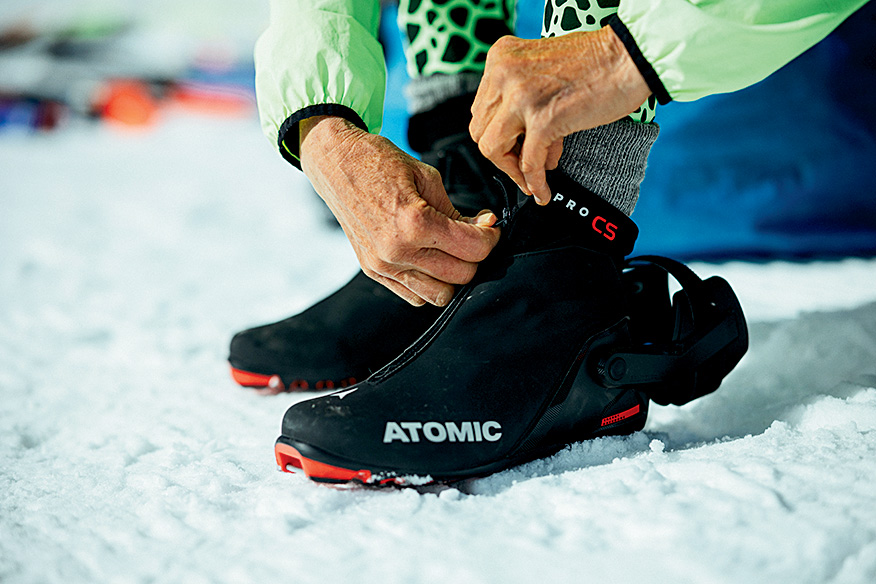When shopping for cross country boots, you’ll find different styles for skate and classic skiing, and touring. Combi boots can be used for both skate and classic, but like a four-season tire, they perform well enough in all conditions but don’t excel at any one thing.

“With boots, the number-one thing is comfort,” says Steve Flagg, owner of the Nordic Skier in Wolfeboro, New Hampshire. “You’re looking for a fit that is snug and comfortable.” Exactly how snug depends on the level of performance you want to get out of them. Less expensive skate and classic boots tend to have more insulation. This makes them warmer but also more likely to pack out and expand. Higher-end boots have less insulation, which makes them colder but also able to retain their shape and perform better longer.
For skate boots, says Mick Dodds, Nordic manager at Ski Hut in Duluth, Minnesota, “I prefer the person’s longest toe makes some contact at the end of the boot. No pressure or restriction, but a happy, comfortable, well-held handshake feel from the ball of the foot back.” In a high-end boot, aim to be as close to the end without the toe touching. For classic boots, you’ll want a little more room, “roughly a quarter to a half-inch of space,” Dodds says.
In addition to fit, the most important features are a boot’s sole and cuff height. In skate boots, “the stiffer the sole, the more energy it’s going to give back to you when you push off of it,” explains Dodds. The amount of stiffness depends on how much carbon fiber versus plastic was used in the sole construction. For classic boots, “you’re looking for a smooth-flexing sole with no hinge points. A boot that doesn’t fit well will hinge,” says Nathan Schultz, founder of Boulder Nordic Sport, which has stores in Boulder, Colorado, and Portland, Maine.
The higher ankle cuffs in skate boots provide ample support while you push off. Though classic boots in general have lower cuffs, you may want to consider something higher for skiing off the groomed. “With touring,” Dodds adds, “someone who is more adventurous might want a boot with a higher cuff, and a membrane, to keep them warmer.”
No matter what kind of skiing you do, though, keep in mind that what you wear inside that boot also affects fit and performance. “It’s not just about the boot,” says Dodds. “It’s about the sock,” He recommends using a midweight athletic sock—no cotton and only one pair, never two.
This story first appeared in the Autumn 2022 issue of Cross Country Skier (#42.1).